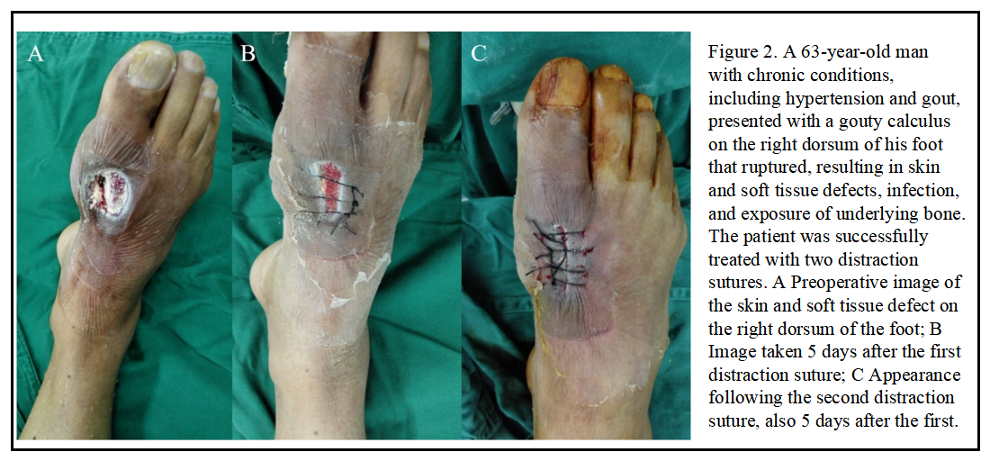German Congress of Orthopaedics and Traumatology (DKOU 2025)
Deutscher Kongress für Orthopädie und Unfallchirurgie 2025 (DKOU 2025)
Clinical observations of staged progressive distraction in skin suture techniques for soft tissue defects
2Elderly Hip Fracture Diagnosis and Treatment Center, Zhongnan Hospital of Wuhan University, Wuhan, China
3Hubei Clinical Medical Research Center of Trauma and Microsurgery, Wuhan, China
Text
Objectives and questions: This study aims to explore the clinical efficacy of staged gradual distraction skin suturing technology for the treatment of skin and soft tissue defects.
Material and methods: A retrospective analysis was conducted on data from 14 patients with skin and soft tissue defects who received treatment using staged progressive distraction skin suture technology at Zhongnan Hospital of Wuhan University between September 2016 and January 2021. All patients underwent staged progressive distraction skin suturing.
Results: The average wound healing time was 1023 days (17.2 ± 3.8 days), with no occurrence of skin edge necrosis during the treatment period. The postoperative follow-up duration was a minimum of six months. At the final follow-up, skin softness, sensory function, and blood supply were reported as normal. The average Vancouver Scar Assessment Scale score was 3.1 points, with nine cases rated as excellent (0–3 points) and five as good.
Discussion and conclusions: Key points of distraction suturing include the following:
- First, identify the point of least tension in the middle of the wound and select the needle entry point on the opposite side, corresponding to the skin adjacent to the wound edge;
- The margin of the suture needle should be chosen based on the amount of surrounding soft tissue and the wound's location;
- The distance between sutures should be adjusted according to the tension at the wound edge to ensure even distribution;
- The suturing depth should reach the subcutaneous fascia layer, incorporating as much subcutaneous soft tissue as possible to minimize skin incision;
- Generally, thicker No. 7 silk threads are utilized for stretch sutures, with simple interrupted sutures being the preferred technique;
- Employ a consistent force when using split pull sutures, tying knots during the suturing process, while simultaneously determining the optimal entry and exit points for the subsequent stitch, gradually aligning and pulling the defective wound together;
- n cases of large wounds, if loosening occurs after multiple stitches are placed, the initial sutures can be removed and re-sutured to minimize the area of the defective wound; ⑧ When re-suturing 3-6 days later, stagger the placement of the last suture, first tightening the skin before removing the previous sutures, and applying sub-relaxing sutures. The staged progressive stretch skin suturing technique for treating soft tissue defects is straightforward to perform and demonstrates effective therapeutic outcomes. This technique merits promotion.
Figure 1 [Abb. 1]
Figure 2 [Abb. 2]






